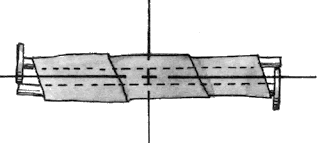The notes seen in the two blog posts below are for Experiment 10: A Speedy Electric Motor, on
the website:
http://www.charlesedisonfund.org/
This specific electric motor has four essential parts as explained on the website: the armature, the field magnet, the brushes, and the commutator. Each of these four parts of the electric motor are key for the motors success. The better each one is made, the faster the motor will be.
The armature is one of the four parts of an electric motor. In this specific experiment, it is made up of two 16-penny nails. The armature is the electromagnet of the motor. It has magnetic charge once either 22 or 24 gauge magnet wire is tightly wrapped around the two 16-penny nails. It spins rapidly (depending on the quality of the motor) creating a magnetic field with the appropriately named field magnet.
The field magnet connects magnetically with the armature to get the motor moving. The field magnet consists of magnet wire and two L-brackets. The magnet wire is wrapped around the brackets 400 times, before being secured down. This part of the motor creates the magnetic field that corresponds with the north and south poles of the armature.
However, the shaft that the armature is on, and the armature itself, would not rotate without the commutator. This part of the experiment is difficult, as the aluminum or copper pieces of the commutator have to be soldered to the tips of the magnet wire of the armature. It is important to sand the enamel of the magnet wire before soldering. If this crucial step is not taken, the motor will not work.
Lastly, there are the brushes. The brushes connect with the commutator, and are made up of two pieces of copper-strand wires. Fanning out the wires of the brushes will make the motor faster, due to the fact that they will cover more of the commutator. The brushes create a current between the commutator, the armature, and the field magnet. The brushes take the power from the 6 volt battery, and supply it to the commutator.
This relates back to the post below that explains the difference between motors and engines. This four-part system is a motor because the energy used to run the system is one of an external source.




No comments:
Post a Comment